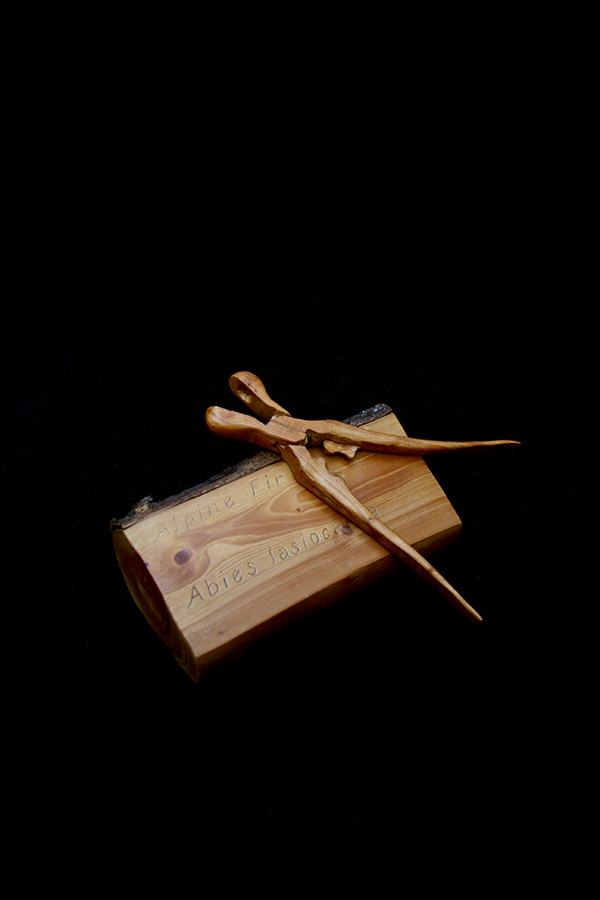This carving was developed using wood from an Alpine Fir and a pocketknife.
Notice the perfectly curved edges and the hinge mechanism. Howard B. Taylor took great care and time to make sure that this carving would not only show off the beauty of the natural wood grain but also could work as a functional tool. The handles can be used to work the carving open and shut. While it appears to be pliers, it is actually a recreation of an antique round ball bullet mold. Of course, a round ball bullet mold was traditionally made of steel and would not have been used if made of wood.

Scientific Name
Abies Lasiocarpa
Means “hairy-fruited” referring to the cones
Height
Ranges from 50 to 100 feet tall
A one-story house averages 10 feet tall. It would take 5-10 houses stacked on top of one another to reach the height of an Alpine Fire.
Width
Ranges from 1 to 2.5 feet in diameter
A hallway area throw rug runner is 2.5 feet wide
Uses
The leaves are eaten by grouse and songbirds.
Mammals eat their seeds. The bark of this and related firs is browsed by deer, bighorn sheep, moose, and elk.
This fir is also known as Subalpine Fir and Rocky Mountain Fir. Its technical name is Abies Lasiocarpa. The scientific name meaning “hairy-fruited” refers to the cones. It is the most widespread western true fir.
It has a dense, long, pointed spiral-like crown. The branches are horizontal rows reaching almost to the base. However, it is scrubby at the timberline. It grows 50-100 feet in height and 1 to 2.5 feet in diameter. The evergreen needles spread almost at right angles in 2 rows, 1 to 1 3/4 inches long. The needles are dark green with whitish lines on both sides. The bark is gray and smooth, but becoming fissured and scaly with blisters of resin. The cones are 2 1/4 to 4 inches long, upright on top twigs and the cone scales are finely hairy with long, winged sheathes.
Location
The habitat is the subalpine zone of high mountains to timberline, forming spruce/fir forests. They range from central Yukon in southeast Alaska, southeast to south New Mexico. These firs add beauty to the Rocky Mountain peaks. The bark of this and related firs is browsed by deer, bighorn sheep, moose, and elk. The leaves are eaten by grouse and songbirds. Mammals eat their seeds.
